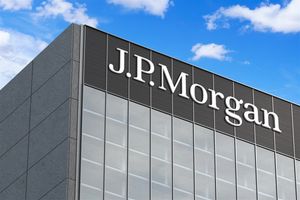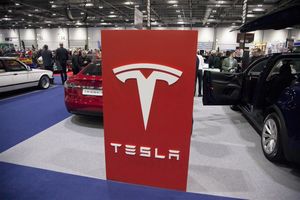
Eli Lilly and Company (NYSE: LLY) has announced a colossal $5 billion investment to establish a new, state-of-the-art manufacturing facility in Goochland County, Virginia. This significant expansion, a substantial increase from an initial plan of $2.148 billion, marks a pivotal moment in Lilly's strategy to bolster its domestic production capabilities, enhance supply chain resilience, and meet the surging global demand for its innovative therapies, particularly in the burgeoning GLP-1 and oncology drug markets. The investment is set to create thousands of jobs and cement the company's commitment to U.S. manufacturing.
This strategic capital allocation is part of Lilly's broader commitment of over $50 billion in U.S. capital expansion since 2020, signaling a clear intent to reinforce its leadership position in critical therapeutic areas. The Virginia facility is poised to become a cornerstone of Lilly's bioconjugate platform and monoclonal antibody portfolio, with a specific focus on manufacturing advanced oncology treatments like antibody-drug conjugates (ADCs), while also indirectly supporting the wider manufacturing network that produces its highly sought-after GLP-1 drugs.
A Massive Investment Bolstering U.S. Pharmaceutical Manufacturing
Eli Lilly's $5 billion commitment to its new Goochland County, Virginia, facility is not merely an expansion but a transformative step for the pharmaceutical giant and the U.S. drug manufacturing landscape. The facility will be Lilly's first dedicated, fully integrated site for active pharmaceutical ingredient (API) and drug product manufacturing, specifically tailored for its bioconjugate platform and monoclonal antibody portfolio. This means a direct enhancement of the domestic supply chain for highly complex medicines, including antibody-drug conjugates (ADCs) used in cancer treatment and explored for autoimmune diseases.
The announcement, made on September 16, 2025, by Governor Glenn Youngkin, highlighted the immediate and long-term benefits. The project is expected to generate 650 high-wage permanent jobs for engineers, scientists, and lab technicians, with an anticipated average annual salary of $100,000, along with 1,800 temporary construction jobs. This significant job creation will provide a substantial economic boost to Goochland County and the Greater Richmond area. The facility itself is projected to be completed and operational within the next five years and is one of four new U.S. manufacturing sites Lilly plans to announce and build.
This massive investment is a culmination of several strategic factors. It represents an expansion of an earlier $2.1 billion plan for the facility and is a direct response to broader industry trends and government pressures. The Trump administration's ongoing efforts to push pharmaceutical companies to increase domestic drug production, including potential tariffs as high as 250% on imported pharmaceutical products, have significantly influenced Lilly's decision to "reshore" its manufacturing operations. CEO David A. Ricks has publicly acknowledged that this investment is a direct measure to mitigate tariff risks and secure supply chains. The Virginia Economic Development Partnership, along with state and local officials, collaborated extensively to secure this project, citing factors such as workforce availability, local incentives, reliable utilities, and robust transportation links. Initial market reactions saw Eli Lilly's stock (NYSE: LLY) trade nearly 2% higher on the day of the announcement, reflecting a general positive strategic outlook from financial news outlets, despite some mixed retail sentiment.
Winners and Those Facing Increased Pressure
Eli Lilly's monumental investment is poised to create clear winners and intensify pressure on various players within the pharmaceutical sector.
Eli Lilly (NYSE: LLY) itself stands as the most significant winner. This expansion directly addresses the overwhelming global demand for its highly successful GLP-1 agonists, Mounjaro (for diabetes) and Zepbound (for obesity), which have faced supply shortages. While the Virginia facility focuses on ADCs, its role in strengthening Lilly's overall domestic manufacturing capacity will free up resources and enhance the resilience of its entire supply chain, indirectly benefiting GLP-1 production. By boosting the manufacturing of ADCs and bioconjugates, Lilly solidifies its foothold in the lucrative oncology market, enabling quicker development and deployment of new cancer treatments. This move also enhances supply chain security, reducing reliance on foreign suppliers and mitigating risks from geopolitical tensions or potential tariffs.
Patients also emerge as significant beneficiaries. Increased manufacturing capacity, particularly for in-demand GLP-1 drugs and innovative oncology treatments, is expected to alleviate shortages and improve access to these life-changing medications. The investment in advanced manufacturing technologies, including AI and automation, could also lead to higher quality and more consistent drug supply. The U.S. manufacturing sector and local economy of Goochland County, Virginia, are significant winners, with 650 high-wage permanent jobs and 1,800 construction jobs expected to provide a substantial economic boost. Furthermore, pharmaceutical technology providers specializing in advanced manufacturing, automation, and AI solutions are likely to see increased demand as other companies strive to match Lilly's technological advancements.
On the other hand, Novo Nordisk (NYSE: NVO), as the other major player in the GLP-1 market, will face intensified competition. While demand remains exceptionally high, Lilly's expanded capacity for Mounjaro and Zepbound (both GLP-1 drugs indirectly supported by this investment) could challenge Novo Nordisk's market share, especially if Novo Nordisk experiences its own supply constraints or if Lilly achieves superior efficiency and availability.
Smaller biotech and pharma companies in the GLP-1 and oncology spaces may face increased pressure. The capital-intensive nature of building such advanced, large-scale manufacturing facilities raises the bar for competition, potentially exacerbating valuation disparities between large-cap and small-cap biotechs. While smaller companies are often innovation hubs, competing on scale and production efficiency against pharmaceutical giants like Lilly will become increasingly challenging. Finally, companies heavily reliant on overseas manufacturing for the U.S. market may find themselves in a difficult position. Lilly's investment is partly a response to the push for domestic drug production and the threat of tariffs. Companies that do not similarly "reshore" their operations could face increased tariffs and supply chain vulnerabilities, impacting their cost structures and overall competitiveness.
Industry Impact and Broader Implications
Eli Lilly's $5 billion investment in Virginia represents a landmark decision with profound implications for the broader pharmaceutical industry, signaling a decisive shift in manufacturing strategies and a response to evolving global dynamics.
This move is a strong affirmation of the reshoring trend within the pharmaceutical sector. Global supply chain disruptions witnessed in recent years, coupled with geopolitical tensions, have underscored the vulnerability of relying heavily on overseas manufacturing. Lilly's commitment to building a fully integrated API and drug product facility in the U.S. for complex therapies like ADCs directly addresses the imperative for enhanced supply chain resilience. This aligns with statements from CEO David Ricks, who emphasized the need for a "secure, resilient supply chain" to deliver medicines and support future breakthroughs. This trend is not isolated to Lilly; other major pharmaceutical players such as Johnson & Johnson (NYSE: JNJ), Novo Nordisk (NYSE: NVO), and AstraZeneca (NASDAQ: AZN) have also announced significant U.S. manufacturing investments, collectively indicating a broader industry pivot towards domestic production.
The ripple effects on competitors are significant. Lilly's aggressive reshoring strategy sets a new precedent, compelling other large pharmaceutical firms to evaluate their own manufacturing footprints and potentially invest in domestic capacity to mitigate risks, ensure supply stability, and benefit from government incentives. The focus on high-value products like ADCs and bioconjugates will intensify competition in these rapidly growing, high-margin therapeutic areas. Companies that lag in adapting to this reshoring trend might face competitive disadvantages in terms of supply security, cost, and regulatory compliance, particularly as the push for domestic API production addresses a "real gap in the supply chain in the US." For local economies, like Goochland County, the investment promises a substantial boost through job creation and associated economic activity, fostering partnerships with local universities for workforce development.
From a regulatory and policy perspective, Lilly's investment is a direct response to, and potentially a preemptive measure against, proposed U.S. tariffs on imported pharmaceuticals, which could range from 10% to 250%. The company's proactive stance is designed to secure its supply chain and potentially gain exemptions from these tariffs. Beyond tariffs, the Inflation Reduction Act (IRA) is also identified as a government incentive catalyzing reshoring efforts, though its specific direct impact on this particular investment is part of a broader supportive environment. Furthermore, legislative initiatives like the proposed BioSecure Act, aiming to penalize pharmaceutical manufacturers collaborating with certain Chinese partners, further encourages the rehoming of manufacturing from China. While these policies aim to strengthen national security and domestic production, concerns have been raised about their potential impact on pharmaceutical innovation, with Lilly's CEO warning that financial strain from tariffs and price caps could lead to cuts in R&D budgets.
Historically, the current wave of investment in U.S. pharmaceutical manufacturing echoes periods when domestic production was strongly supported, such as the mid-20th century, which saw significant growth fueled by government funding. However, Lilly's current commitment of over $50 billion in U.S. capital expansion since 2020 is unprecedented, marking the largest pharmaceutical manufacturing investment in U.S. history. This reflects a unique confluence of geopolitical pressures, vulnerabilities exposed by recent global events, and targeted policy incentives that are driving a historic shift back to domestic production, setting a new benchmark for the industry.
What Comes Next
Eli Lilly's $5 billion investment in Virginia heralds a new era for its manufacturing capabilities, with a clear roadmap of short-term and long-term implications for the company and the broader pharmaceutical market.
In the short term (within the next five years), the immediate focus will be on the construction and integration of this cutting-edge facility. This phase will see the creation of 1,800 temporary construction jobs, followed by the recruitment of 650 highly skilled engineers, scientists, and lab technicians for permanent positions. This substantial workforce development will be crucial for the facility, which will incorporate advanced technologies such as machine learning, artificial intelligence (AI), and automated systems to ensure efficient and precise production of complex bioconjugates and monoclonal antibodies. As the facility takes shape, Lilly will begin to establish its first fully integrated API and drug product site for these advanced therapies, incrementally reducing its reliance on external manufacturing partners and overseas facilities. This initial phase is critical for laying the groundwork for a more secure and resilient domestic supply chain, aligning with national pharmaceutical security goals.
Looking at the long-term possibilities (beyond five years), once fully operational, the Virginia plant is expected to significantly boost Lilly's capacity to produce Antibody-Drug Conjugates (ADCs) and other advanced biologic therapies. This increased capacity will enable faster development and delivery of innovative treatments for cancer and autoimmune diseases, positioning Lilly as a leader in these high-growth therapeutic areas. As a fully integrated facility, it will streamline the transition of new bioconjugate and antibody therapies from research and development to commercialization, potentially accelerating drug launches. The substantial economic multiplier effect is also a long-term benefit, with state officials projecting that every dollar invested by Lilly could generate up to four dollars in local economic activity, fostering growth in related industries.
Lilly's strategic pivots are evident in this investment: a strong move towards domestic manufacturing reshoring to mitigate tariff risks and enhance supply chain security, a deep focus on complex biologics like ADCs that require specialized infrastructure, and a clear commitment to leveraging advanced technology for "smart manufacturing." The bioconjugate platform also offers flexibility, allowing the facility to adapt to future generations of ADCs or novel bioconjugate therapies.
However, significant market opportunities come with inherent challenges. The ADC market is experiencing rapid growth, projected to exceed $30 billion by 2028, driven by clinical improvements over standard treatments. Lilly's strong ADC pipeline positions it well to capitalize on this. Yet, the technical complexity of ADC manufacturing is immense, requiring precise conjugation, high purity, stability, and stringent quality control due to the highly potent nature of these compounds. Acquiring and retaining a specialized workforce in bioconjugate chemistry and advanced manufacturing will also be critical. The market remains intensely competitive, compelling Lilly to continuously innovate and differentiate its offerings. The successful navigation of these complexities will determine the ultimate impact of this strategic investment.
Conclusion: A Strategic Bet on the Future of Pharma
Eli Lilly's momentous $5 billion investment in its new Virginia manufacturing facility underscores a bold and strategic commitment to the future of pharmaceutical innovation and domestic production. This unprecedented capital allocation is more than just an expansion; it represents a pivotal shift towards securing a resilient supply chain, leading in advanced therapeutic modalities, and fostering significant economic growth within the United States.
The key takeaways from this investment are clear: Lilly is doubling down on high-value, complex biologics, particularly Antibody-Drug Conjugates (ADCs) for oncology and autoimmune diseases, while simultaneously bolstering its overall U.S. manufacturing footprint to meet surging demand for its entire portfolio, including its blockbuster GLP-1 drugs. The creation of 650 high-wage permanent jobs and 1,800 construction jobs, coupled with significant local economic generation, highlights the tangible benefits of this reshoring initiative. Furthermore, the integration of cutting-edge technologies like AI and automation emphasizes Lilly's dedication to optimizing efficiency and quality in drug production.
Assessing the market moving forward, Eli Lilly (NYSE: LLY) is positioned for sustained growth. The GLP-1 market, driven by Mounjaro and Zepbound, is projected to reach colossal figures, with Lilly at its forefront. While the Virginia plant specifically targets ADCs, its role in a broader $50 billion U.S. manufacturing strategy will indirectly free up capacity and strengthen the supply chain for all of Lilly's key therapies. The oncology market, the largest therapeutic area, will also see Lilly expand its influence through increased ADC production. The company's diversified pipeline, spanning Alzheimer's and autoimmune conditions, further solidifies its long-term potential. Intriguingly, emerging research suggesting potential links between GLP-1s and cancer risk could unlock novel synergies for Lilly, given its strength in both metabolic disorders and oncology.
This investment holds immense significance and lasting impact. It cements Lilly's leadership in U.S. biopharma manufacturing, enhancing national security by reducing reliance on foreign supply chains. It also sets a precedent for the pharmaceutical industry, encouraging further domestic investment and innovation. For investors, vigilance is paramount in the coming months. Monitor the progress and integration of the Virginia facility; timely completion and efficient operation will be crucial for realizing the full benefits and meeting demand. Keep a close eye on GLP-1 market dynamics, especially Lilly's ability to maintain market share against competitors like Novo Nordisk (NYSE: NVO), and anticipate clinical trial readouts for pipeline candidates like the oral GLP-1, orforglipron, and retatrutide. The performance of Lilly's oncology drug pipeline, particularly its ADCs, is also critical, as the Virginia investment underpins this strategic focus. Finally, stay informed on the evolving regulatory and geopolitical environment, as potential tariffs and incentives for domestic production will continue to shape the industry landscape.
In conclusion, Eli Lilly's Virginia investment is a strategic masterstroke, reinforcing its commitment to innovation, supply chain resilience, and sustained growth across its critical therapeutic areas. It is a powerful statement about the future of pharmaceutical manufacturing in the U.S. and a clear signal for investors to watch closely as Lilly leverages this monumental commitment to shape the global healthcare landscape.





